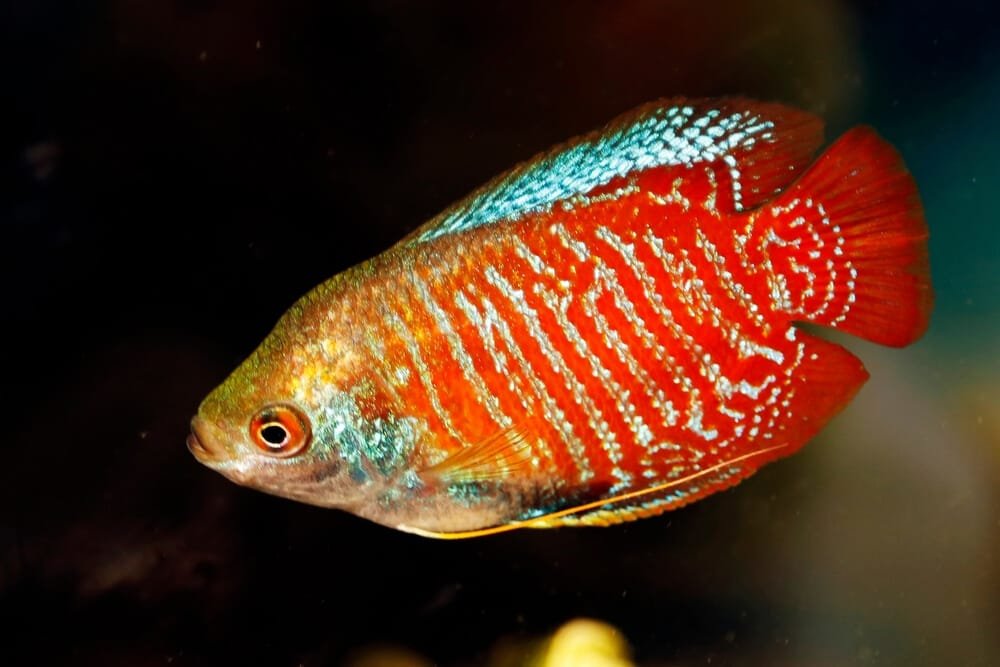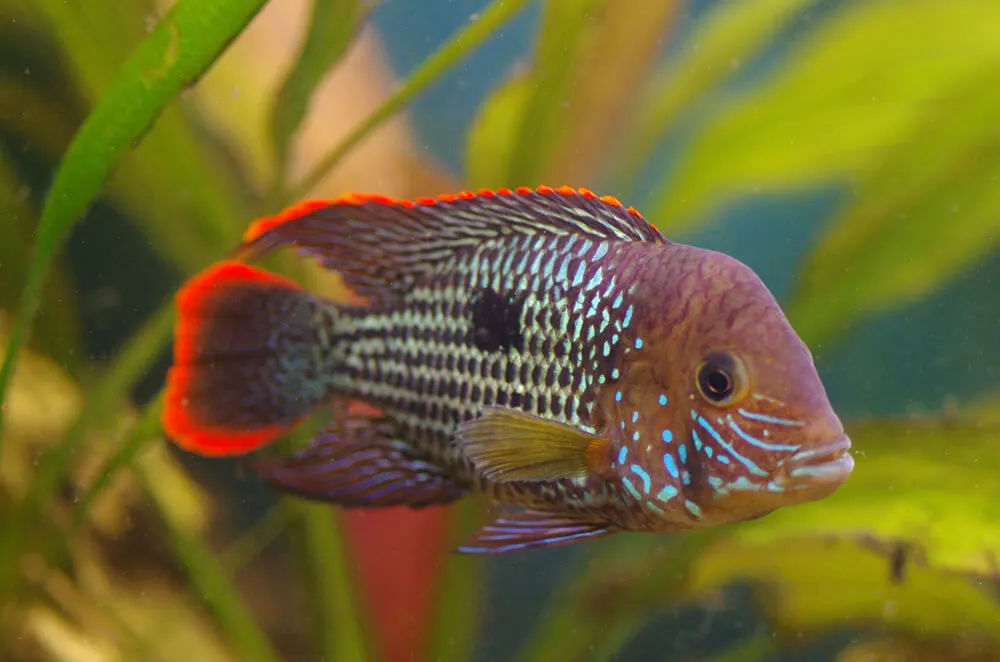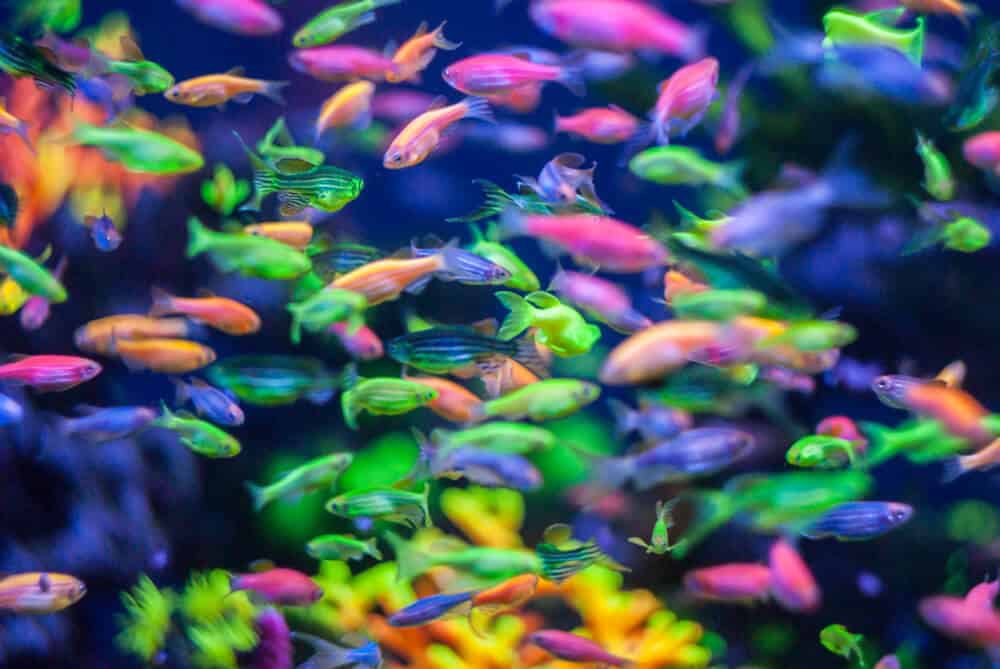Dwarf Gourami Care Guide: Tank Size, Diet and Temperament

Imagine having a little splash of color swimming gracefully in your aquarium, capturing everyone’s attention with its vibrant hues and playful personality. Look no further than the enchanting Dwarf Gourami! This delightful freshwater fish, also known as Trichogaster lalius, is a popular choice among aquarium enthusiasts. With its brilliant shades of blue, red, and orange, the Dwarf Gourami adds a touch of elegance to any aquatic paradise. Not only does it possess stunning beauty, but it also boasts a peaceful nature, making it an excellent addition to community tanks. Dive into the world of the captivating Dwarf Gourami and discover why it is a favorite among fish lovers everywhere.
Physical Description
Size
Dwarf Gouramis are a small species of fish, growing to an average size of around 2 to 3 inches in length. Their compact size makes them suitable for smaller aquariums and tanks, allowing fish enthusiasts with limited space to enjoy their vibrant colors and interesting behavior.
Color
One of the most striking features of Dwarf Gouramis is their beautiful colors. These fish are available in a variety of hues, including vibrant blues, reds, yellows, and oranges. Their bodies are often adorned with intricate patterns and iridescent scales, making them a true delight to observe in an aquarium setting.
Fins and Tails
The fins and tails of Dwarf Gouramis are another eye-catching aspect of their physical appearance. They have long, flowing fins that add to their elegant and graceful movement in the water. The tail fins, in particular, are usually colorful and adorned with intricate patterns, further enhancing their overall beauty.
Habitat
Native Range
Dwarf Gouramis are native to the stagnant and slow-moving waters of Southeast Asia, particularly in the regions of India, Bangladesh, and Myanmar. They are commonly found in rice paddies, swamps, and small streams with dense vegetation. These natural habitats provide them with plenty of hiding spots and places to explore.
Aquarium Requirements
Creating a suitable habitat for Dwarf Gouramis in an aquarium involves replicating their natural environment as closely as possible. They prefer densely planted tanks with lots of floating vegetation that provides them with hiding spots and shade. Additionally, a substrate of fine gravel or sand is recommended, as it mimics their natural habitat. Providing a variety of hiding spots, such as caves and driftwood, will also help them feel secure and reduce stress.
Behavior
Temperament
Dwarf Gouramis are generally peaceful and well-suited for community aquariums. They are not known to be aggressive towards other fish and can coexist peacefully with a wide range of species. However, it’s important to note that individual temperament can vary, and some Dwarf Gouramis may display territorial behavior, especially when breeding. Keeping an eye on their behavior and providing enough space and hiding spots will help to maintain a harmonious tank environment.
Schooling Behavior
Dwarf Gouramis are not schooling fish but have a somewhat social nature. They often swim together in small groups, forming loose associations with their own kind and other peaceful fish species. Having a few Dwarf Gouramis in an aquarium can create a sense of camaraderie and increase their overall well-being.
Compatibility with Other Fish
Dwarf Gouramis are generally compatible with a wide range of peaceful fish species. They can coexist with other community fish like tetras, rasboras, guppies, and corydoras catfish. However, it’s important to avoid pairing them with aggressive or fin-nipping fish, as this may cause stress and potential damage to the Dwarf Gouramis’ delicate fins and tails. Always research and consider the temperament and compatibility requirements of potential tankmates before introducing them to your aquarium.
Feeding
Diet
Dwarf Gouramis are omnivorous fish, meaning they consume a mix of plant matter and small invertebrates. In the wild, their diet mostly consists of small insects, crustaceans, and algae. In captivity, they readily accept a variety of foods, including high-quality flake and pellet foods designed specifically for tropical fish. Supplementing their diet with occasional live or frozen foods, such as bloodworms or brine shrimp, can provide them with essential nutrients and enhance their natural feeding behaviors.
Feeding Schedule
Feeding Dwarf Gouramis once or twice a day is usually sufficient to meet their nutritional needs. It’s important to avoid overfeeding, as this can lead to obesity and negatively impact their overall health. Aim to provide an amount of food that can be consumed within a few minutes, and remove any uneaten food to maintain water quality.
Breeding
Courtship Behavior
Dwarf Gouramis are known for their interesting courtship behavior. Males undergo a significant color change during this process, displaying vibrant and intense hues to attract females. They also engage in elaborate displays, including flaring their fins and circling their potential mates. The courtship behavior may appear aggressive at times, but it rarely results in actual harm or injuries.
Breeding Process
To encourage breeding, it’s important to create suitable conditions in the aquarium. This can be achieved by providing ample hiding spots and plants for the female to deposit her eggs. Once the eggs are laid, the male will fertilize them and take on the responsibility of guarding the nest. It’s crucial to remove other fish from the breeding tank to prevent disturbances or predation on the eggs.
Egg Care
The male Dwarf Gourami will diligently guard the nest until the eggs hatch, which usually occurs within 24 to 48 hours. After hatching, the fry will remain in the nest for a few days, feeding on their yolk sacs. Once the fry are free-swimming, they can be fed newly hatched brine shrimp or finely crushed flake foods. It’s important to provide suitable-sized food particles to ensure their proper growth and development.
Common Health Issues
Dwarf Gourami Disease
Dwarf Gourami Disease, also known as iridovirus, is a viral infection that affects Dwarf Gouramis and can be highly contagious. Symptoms include faded coloration, loss of appetite, and development of sores or lesions. Unfortunately, there is no known cure for this disease, and infected fish should be quarantined or euthanized to prevent the spread of the virus. It’s essential to purchase fish from reputable sources and maintain good hygiene practices to minimize the risk of this disease.
Fin Rot
Fin Rot is a common bacterial infection that affects the fins and tails of freshwater fish, including Dwarf Gouramis. It can be caused by poor water quality, stress, or injuries. Symptoms include frayed or disintegrating fins, discoloration, and lethargy. Treatment involves improving water conditions, performing regular water changes, and using antimicrobial medications as recommended by a veterinarian.
Ich
Ich, also known as white spot disease, is a parasitic infection caused by the protozoan Ichthyophthirius multifiliis. Affected fish develop white spots resembling grains of salt on their bodies, fins, and gills. They may also display increased scratching against objects in the aquarium. Treatment options include raising the water temperature and using appropriate medications to eliminate the parasites. Good water quality and stress reduction are crucial for preventing and controlling Ich outbreaks.
Tankmates
Compatible Fish
Dwarf Gouramis can coexist peacefully with a variety of peaceful and similarly sized fish species. Some suitable tankmates include tetras, rasboras, guppies, mollies, and corydoras catfish. These fish share similar water parameter requirements and have a peaceful temperament, making them a good match for community aquariums.
Incompatible Fish
It’s important to avoid pairing Dwarf Gouramis with aggressive or fin-nipping fish, as this can lead to stress and potential damage to their delicate fins and tails. Some incompatible fish species include larger cichlids, aggressive barbs, or aggressive livebearers. Always research and consider the temperament and compatibility requirements of potential tankmates before introducing them to the aquarium.
Aquarium Setup and Maintenance
Tank Size and Equipment
A recommended minimum tank size for Dwarf Gouramis is around 20 gallons, allowing them enough space to swim and establish territories. Proper filtration is essential for maintaining good water quality, and a heater can be used to maintain a stable temperature within the optimal range of 75-82°F (24-28°C). Adequate lighting and a cover should also be provided to ensure the well-being and safety of the fish.
Water Parameters
Dwarf Gouramis thrive in slightly acidic to neutral water conditions. The recommended pH range is between 6.0 and 7.5, with a water hardness level of 5-15 dGH. It’s important to regularly monitor and maintain the water parameters to ensure the health and well-being of the fish. Regular water testing, along with appropriate water conditioners and treatments, can help maintain optimal water quality.
Maintenance Routine
Regular maintenance is essential for keeping Dwarf Gouramis healthy and their habitat clean. This includes performing weekly partial water changes of around 20-30% to remove excess nutrients and maintain water quality. Additionally, routine gravel vacuuming, trimming plants, and cleaning the aquarium equipment will help prevent the buildup of debris and maintain a healthy and visually appealing habitat.
Varieties and Morphs
Flame Gourami
The Flame Gourami, known for its vibrant reddish-orange coloration, is a popular variety of Dwarf Gourami. It adds a striking pop of color to any aquarium and is highly sought after by fish enthusiasts. The Flame Gourami shares similar care requirements and behavior traits to other Dwarf Gouramis, making it a great addition to a community setup.
Neon Blue Gourami
The Neon Blue Gourami is another visually stunning variety of Dwarf Gourami. Its electric blue hue with streaks of vibrant yellow and orange make it a captivating addition to any aquarium. Like other Dwarf Gouramis, the Neon Blue Gourami is generally peaceful and well-suited for community tank setups, adding a touch of elegance and vibrancy to the underwater world.
Powder Blue Gourami
The Powder Blue Gourami is known for its subtle and calming coloration. It has a pale blue body with a delicate iridescent sheen, resembling fine powder or mist. This variety adds a sense of tranquility and serenity to any aquarium, making it an excellent choice for those looking for a more understated, yet still beautiful, addition to their tank.
Popular Misconceptions
Compatibility with Betta Fish
One common misconception is that Dwarf Gouramis are suitable tankmates for Betta fish. While both species share similar body shapes and prefer calm waters, their aggressive tendencies can often lead to territorial disputes and fighting. It is generally advisable to house Dwarf Gouramis and Betta fish separately to prevent any potential harm to either species.
Tankmates Size Ratio
Another misconception is the size ratio of tankmates for Dwarf Gouramis. Some may believe that tankmates should be significantly smaller in size. While it’s important to consider the compatibility and temperament of tankmates, the size ratio alone is not the sole determining factor for a successful community setup. Attentive observation of the individual behaviors and compatibility requirements of each species is key to maintaining a harmonious aquarium environment.
Summary
Dwarf Gouramis are a small yet stunning species of fish that bring vibrant colors and enticing behavior to any aquarium. By providing them with suitable habitat conditions, a balanced diet, and compatible tankmates, fish enthusiasts can enjoy the elegance and beauty of Dwarf Gouramis in their own homes. With proper care and attention, these delightful fish will thrive and bring joy for years to come.





